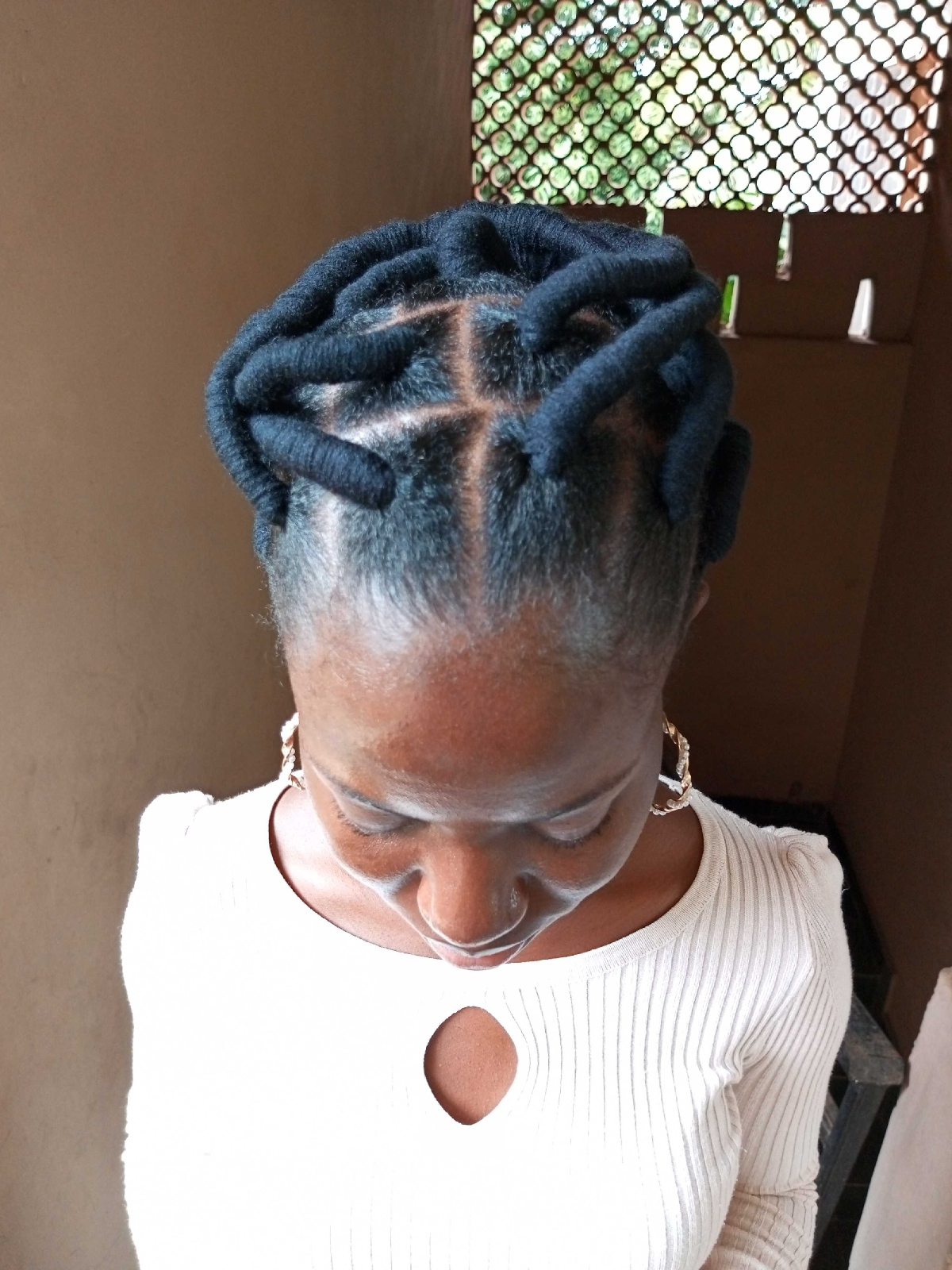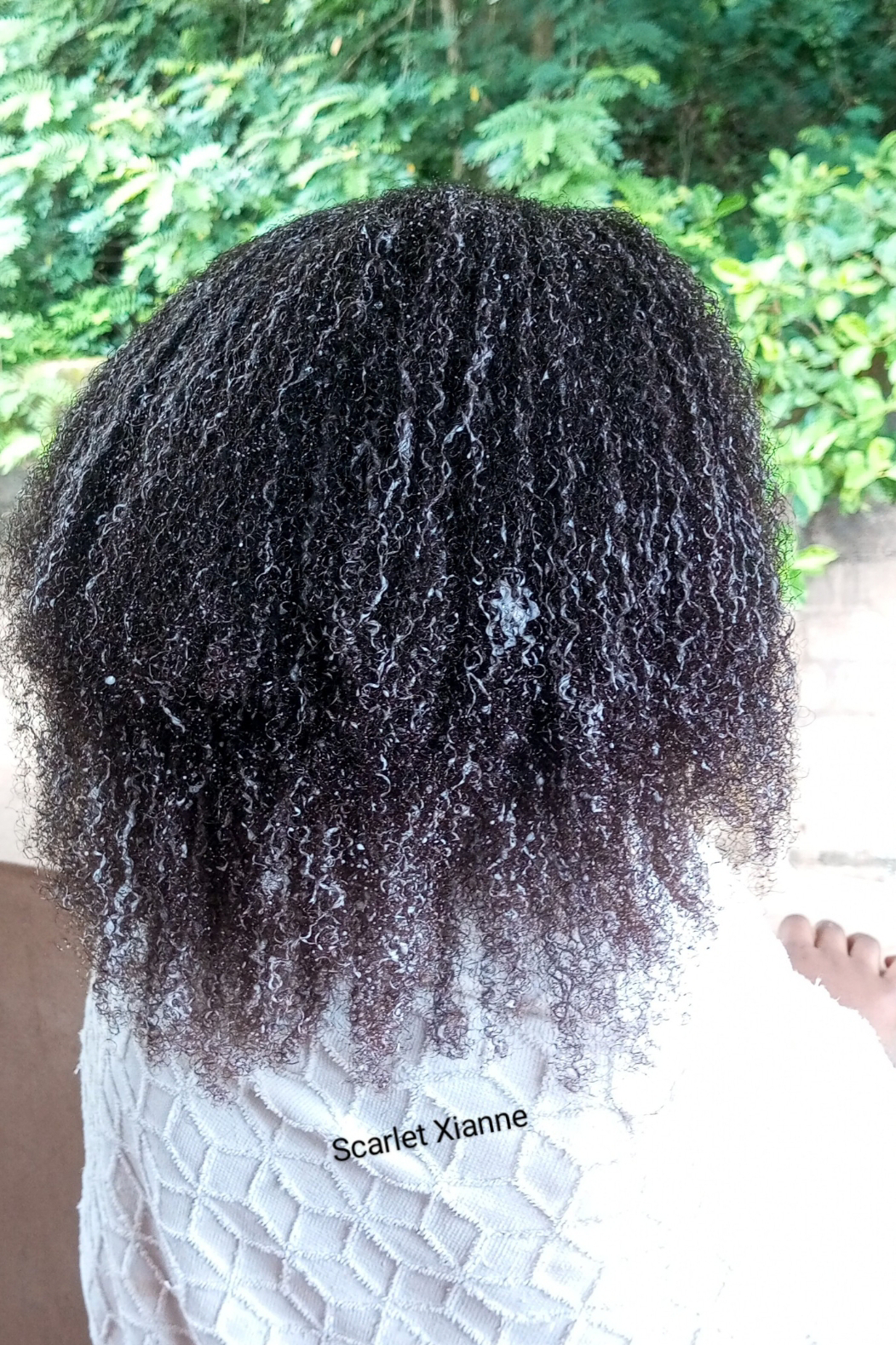Sunday, 6 July 2025
Protective Styles That Actually Protect: Choosing the Right Hairstyles for Natural Hair
Thursday, 3 July 2025
Detangling Your Natural Hair : The Right Way to do it
Wednesday, 2 July 2025
Trimming Without Fear: How Often to Trim Natural Hair and Why It Matters.
Trimming is one of the most misunderstood aspects of natural hair care. Many people avoid it out of fear of losing length, but regular trims are essential for maintaining healthy, thriving hair. For afro-textured hair, especially in the Nigerian environment where humidity, dryness, and manipulation are common, trimming should be a routine part of your regimen—not a punishment.
This post breaks down why trimming is necessary, how often you should do it, and how to tell when it’s time.
Why Trimming Is Important
Trimming does not make your hair grow faster. What it does is:
- Prevent breakage by removing weak, frayed ends
- Promote length retention by reducing split ends that travel up the strand
- Make styling easier by reducing tangles and knots
- Improve the appearance of your hair by making it look fuller and more defined
- Encourage healthy growth by removing damaged or thin ends that cause your hair to look unhealthy
Signs It’s Time to Trim Your Hair
You don’t need to follow a strict calendar. Instead, pay attention to how your hair looks and feels. These signs suggest it’s time for a trim:
- Rough, thin, or transparent ends
- Split ends that look like the tips are fraying
- Single-strand knots that make combing difficult
- Hair that tangles more easily than usual
- Styles don’t look as neat or defined as they used to
- Your ends feel dry no matter how much you moisturize.
- Every 8 to 12 weeks if you style your hair frequently or use heat
- Every 3 to 4 months if you wear protective styles regularly and your ends are well cared for
- Twice a year if your hair is very low-maintenance and you rarely experience damage
If you notice damage before the next scheduled trim, don’t wait. It’s better to remove a little now than lose more length later due to breakage.
How to Trim Natural Hair.
You can trim your hair at home if you are comfortable, or visit a salon that understands natural hair. If trimming at home:
- Use sharp hair shears only: Regular scissors will cause more damage
- Work in sections: Make sure your hair is stretched or blown out for accuracy
- Trim only what is needed: Start with a small amount, usually half an inch
- Use natural lighting: This helps you see split or thin ends clearly
You can trim after a wash, during styling, or as part of your detangling process. The most important thing is consistency and care.
Trimming Myths to Ignore.
- “Trimming makes hair shorter.” Trimming removes unhealthy ends so you can retain more length over time.
- “You should never trim natural hair.” Not trimming leads to damaged ends and eventually breakage.
- “Hair will grow faster if you trim more often.” Trimming helps maintain healthy hair, but growth comes from the scalp.
Trimming is not the enemy of growth—it is a tool for healthy hair. Don’t be afraid to let go of damaged ends. When done correctly, trimming strengthens your hair care routine, makes your styles look better, and helps you achieve your long-term goals.
Monday, 30 June 2025
Oils and Butters: When and How to Use Them on Natural Hair
Saturday, 28 June 2025
Gentle Wash Day Routines for Natural Hair
Friday, 27 June 2025
Moisture is Key
Wednesday, 25 June 2025
Natural Haircare Routine : Easy Guide
Friday, 4 October 2024
How to Care for Your Natural Hair
Wednesday, 30 September 2020
Who Set These Standards For Beauty?
African Threading Will Not Grow Your Hair!
Saturday, 26 September 2020
Natural Updos
Updos are always in. Natural Updos especially , will never go out of fashion. They're for every woman who wants to switch up their everyday look. They can be worn to official functions, weddings, birthday parties etc.
I particularly love textured Updos because they look gorgeous, different and a bit extravagant. No matter the face shape of the wearer, they usually turn out great.
Enjoy these pictures of some of the Updos I've created.
See you soon😊.
Friday, 14 October 2016
My Very First Perm Rods Set
Protective Styles That Actually Protect: Choosing the Right Hairstyles for Natural Hair
Protective styling is one of the most common pieces of advice given to anyone caring for afro-textured/natural hair. But not all...
Popular Posts
-
Na wa o! I have been on my natural hair journey for a few years. In 2010, I got geri curls. In 2011, after switching to normal relaxer, I d...
-
Hey guys, how you doing? So I recently made a drawstring ponytail. I've since gotten questions on how I made it. What weave I used? So ...
-
Solitude This is the place I live It's peaceful here The only worries are those I let in No phony friends can find me here Life...
-
So, in my last post I told you guys about my hair challenges and the temptation to relax my hair. Well, I went relaxer shopping and I relax...
-
I visited a salon recently and I was reminded all over again why I hardly ever go to salons. Kai! My hair suffered. I don't even know ...
-
Hello people. How has your day been? Mine's been fine. So, I came across this post on Bella Naija where Yvonne “Vixen” Ekwere of Silve...























